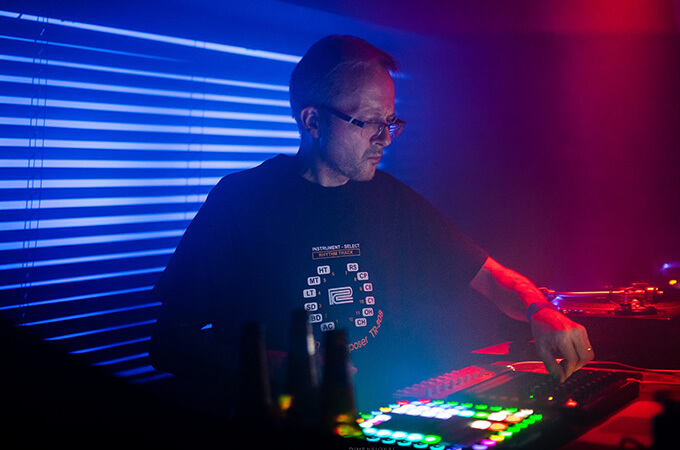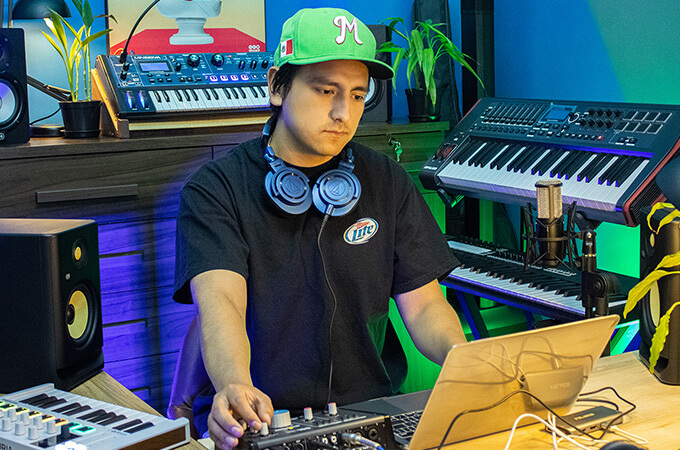Discover Bitwig Studio
One DAW - Two Sequencers
Each modern DAW has some kind of linear Arranger and a free-form clip Launcher. What sets Bitwig Studio apart is how the two sequencers can be used together, letting you arrange, edit, and perform in any order and combination. Welcome to modern music production, courtesy of Bitwig Studio.
- 0:30 - Meet the Arranger Timeline
- 1:09 - …and the Clip Launcher, for creating variations & arrangements
- 2:30 - Using the Launcher and Arranger together
- 5:22 - Creative "play modes" of Clip Launcher, performing from the jungle
Launcher Arrangements
Bitwig's Clip Launcher is a realtime companion to the Arranger, but it can also create arrangements in its own right. So triggering one clip can also set what we should "Do Next" time. And organizing our clips into blocks provides new worlds of opportunity. Glimpse what is possible, then make the Clip Launcher your own in Bitwig Studio.
- 0:55 - What are Next Actions?
- 3:08 - Changing multiple clips at once
- 4:36 - "Clip blocks," for breaks options that don't repeat
- 6:46 - A full arrangement, built with Clip Launcher
Recording & Reworking Audio
Recording audio in Bitwig Studio works onto the timeline or straight into the Clip Launcher. And once it is there, it can get sliced into Drum Machine for rearranging, or dropped into Sampler for quick sound design. It isn't alchemy; it's just Bitwig.
- 0:40 - Setting up independent audio in & out
- 3:11 - An audio track for recording, with FX…
- 4:22 - …and slice the audio to Drum Machine!
- 5:28 - Freestyle recording into the Clip Launcher…
- 6:24 - …and dropping it straight into Sampler!
- 9:01 - Using notes to trigger your audio
Audio Editing
Audio clips are the building blocks for arranging music. Editing is a different task, so each clip can hold multiple audio events. Simply Split some drums, rearrange and automate them, and never spoil the musical structure. It's the Bitwig way.
- 0:42 - Adjusting audio clips on the Arranger timeline
- 1:59 - There are tools, or just use gestures with one tool for most functions
- 3:11 - Working in the Detail Editor Panel with audio events & expressions
- 5:20 - Warping audio with Stretch expressions
- 7:07 - Slice In Place, to easily edit events within each audio clip
- 8:01 - Gain & Pan expressions, freely drawn or snapping (for better techno)
Note Editing
With the right tools, note editing can be quick and smooth. We'll go from controller setup thru basic editing, including note painting techniques and even display options to focus on MPE channel, harmonic relationship, and more. Wherever your notes takes you, Bitwig is ready to light the way.
- 0:25 - Quick controller set up and preference review
- 1:54 - Recording a note clip and editing basics
- 3:19 - Changing the beat grid, plus the auto [Z]oom key
- 4:41 - Note painting — and step sequencing — with the pen tool
- 7:02 - Quantizing, sliding, and scaling notes
- 8:57 - Legato for perfect lengths & velocity editing
Share this on:






